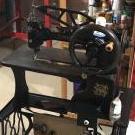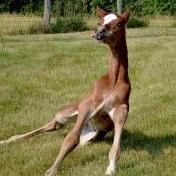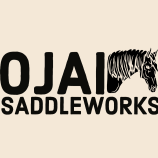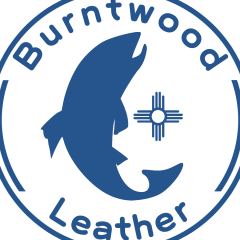-
Content Count
4,050 -
Joined
-
Last visited
About bruce johnson
-
Rank
Saddlery & Tack Moderator
- Birthday 06/15/1960
Contact Methods
-
Website URL
http://www.brucejohnsonleather.com
-
ICQ
0
Profile Information
-
Gender
Male
-
Location
Oakdale, CA
-
Interests
leather tools and history
LW Info
-
Leatherwork Specialty
Leather Tools
-
Interested in learning about
everything
-
How did you find leatherworker.net?
Ive been here from about day one
Recent Profile Visitors
46,892 profile views
-
I will second the Grant Book and there are a few others out there. There are some videos - Bryan Neubert and some others along with on-line instruction. Yes these old timers used relatively crude tools and mostly got excellent results but that was then, this is now. Braiding was a hands-on taught by someone on the ranch usually - a true bunkhouse craft. There are a lot of pieces of that puzzle. Rawhide braiding to my mind is the lowest paid and most labor and time intensive of about any handwork I can think of. That said, I love good rawhide work, appreciate what all has gone into it, and don't mind paying what they are asking. You skin the cow, flesh the hide, dehair the hide by whatever method you like, stretch the hide, cut sections, cut big strings, cut little precise strings from the big ones, bevel the strings, temper the strings so they are just right, keep them at just the temper right while you braid. Then you hope it dries evenly, pulls down good, and doesn't twist or gap. My hat is off to them all. I have been really intrigued by braiding for 45 years but as one guy told me - you have too many irons in the fire to commit to it - fair assessment and true enough. That said, if you are just getting into it then the braiding groups are most likely going to tell you to start with buy some good string, already cut and beveled and use that first. Randy Roberts seems to be the go-to guy for that right now, Bret Haskett has string sometimes, no doubt others. They are going to to tell you to get with somebody to learn the tactile stuff that a book or video can't - tempering correctly and even tension. Once you feel like you have the braiding skills , then go back and make your own when you know what good string looks and feels like and why certain hide parts are better for foundation and other parts better for buttons. Don't know where you are located but the rawhiders are a really open group. There are get-togethers in Texas, Utah, Idaho, and more probably - Pendleton, Oregon gathering is coming up in a few weeks. These are informal gatherings with masters and rank beginners - openly sharing tips and tricks and "let me show you this" deals over a few days. These folks have had someone teach them and most will line up three deep to help a beginner. They can demonstrate everything from a notched wood stick and pocket knife to make string to some pretty sophisticated cutters, bevelers, and splitters. I don't think I have ever met a braider that didn't talk pretty reverently and appreciatively of whoever taught them to start with. Then they say so-and-so taught me this button, that guy taught me to flesh better, Joe taught me to scald instead of scrape to dehair, etc. Used to be they had to quit a ranch job and went to another one to learn different things from the crew there, now they go to another gathering and mostly keep the same job.
-
Great jaw shape! Much better than most made today. If you do line with leather as dikman suggested then flesh side o r a neutral color chrome tan is better. Has more grip with less pressure than grain side vegtan.
-
Wax pots can sure have a heater. Some electric but I’ve seen gas jet and wick flame heaters too. Waxes varied by season and preference of the user. Some were commercial, some shop mixes of wax, oils, and spirits. Solvent and some mild heat should clean that up. I’ve seen a lot of thread spools in coffee cans too. One shop I visited squirted several shots of oil on the spool before lunch so it would work into the thread to lube it before they stitched that afternoon. He said he did it at coffee making time first thing, before lunch, and before happy hour at the end of the day.
-
I have done that with several machines - lathes, mills, etc and it save bucks and time. Lift gate added another $100-150. they did lift gate deliveries by areas and waited until they had enough to make a run worthwhile. It could have sat for 7-10 days at the terminal. I’ve got a Harbor Freight scissor lift cart and that makes unloading even heavy stuff a one man job.
-
You are sure welcome - These setters are sized to the rivet sizes. The most common rivet sizes are #9 rivets for saddles, harness, and heavy stress projects - #12 for straps and bag reinforcements - #14 rivets for small projects. Here is a link to my website for examples done by both makers and information. https://brucejohnsonleather.com/leather-tools-sale/rivet-setters/
-
No finish will make it so rivets wont scratch. Setting them will minimize but not eliminate. Some people like the handmade look, some prefer the smooth finish. First off, full disclosure - I sell rivet domers and three piece rivet sets. Some people are going to say vested interest. My personal experience from long before Bruce Johnson Leather Tools was even a thought. I was hand peening rivets or using the Osborne setter dished out part. A good 15 years or more ago I took "Saddle Week" at the Sheridan Leather Show. The second morning I watched Don Butler set rivets with the Bob Douglas 3 piece set. Smooth, easy, fast, nearly or exactly perfect setting, smooth peen, and a domed head that didn't catch. Thirty people stood there like we'd seen the second coming. At the lunch break I was at Sheridan Leather Outfitters buying the Bob Douglas sets along with nearly everyone in the class. Never looked back and my wife is still using them. Herb French may still be making some of the original Bob Douglas ones. Wayne Jueschke makes a nice set and the domer makes a little design in the head. I've got Jueschke sets and what will be the last sets made by Richard Brooks in stock. Buckle Guy has sets. Likely some import versions are on Etsy or Amazon. Point is, they will do a cleaner faster job than most hand peening and the domed heads will not only dress it up, but make it slide over other part with less marking.
-
cashmanleather started following bruce johnson
-
Depends on How much you need to move around but Here's some thoughts. I built all kinds of stuff and several saddles in an 8X14 space with two sewing machines, a cutting table, and stamping bench. It was so damn tight I wonder now I got anything done. I like a big table like Tom but I think for the sake of being able to move around, you are going to need to size down to 3x8. Likely it will need to go against a wall. You've got a bunch of bench top machines that take up real estate. Decide if they all need to be mounted in a dedicated spot or can be bolted to a modular base and stored away when not in use. A bunch of old time shops mounted splitters and bench top machines to a board that slid into a slot in the bench, then pulled out and stored underneath. Think about storage of leather, glue, hardware too. A few considerations about shed-shops from being in a bunch. Insulate, insulate, insulate. Have a heating and air conditioning system. Put in twice as many outlets as you think you will need. Put in three times as much lighting as you think you will need, and LED is your friend. Be able to ventilate if you use glues or finishes.
-
Contact Tim Purdy at Steel Stamps Inc - Boise ID. Best steel stamps in the business and good to deal with.
-
Yes they work on leather if the roller blade is sharp
-
But then again with hand edgers, you need to buy different sizes for different thickness too. Some people can slight rotate the cutters on the EZ edger to not catch the full blade. It sort of works but not ideal or as consistent as the sized edgers
-
It comes in two edge and Four edge versions. For the two edge you flip the strap over and pull through again. Four edge is a single pass
-
All good experience. I have sold several used ones through here. One that stands out was an Amish maker who looked at one I had in Sheridan. He was “thinking about it”. He came back about 2 minutes later and said his wife told him he must buy it. She was the rein and strap edger of the shop.
-
Divelbiss. They made leather tools in the expansion of leather crafting as a hobby alongside Craftool and a few other hobby craft tool makers - I’m thinking the 1960s
-
I get them once in a while. Nothing special and on a par with the decent crafters grade swivel knives from the 60s. A step above the cheap bottom end craftool knives. A bit of a collectible for the people who collect swivel knives.
-
Daniel, one observation here. Do you think it has been rehandled? That purple hue to the finish looks like the handle is more recent and not the original rosewood handles. Any thoughts? Nice clean knife overall.



.thumb.jpg.6d6fd2a73114af60b208059411973bac.jpg)







